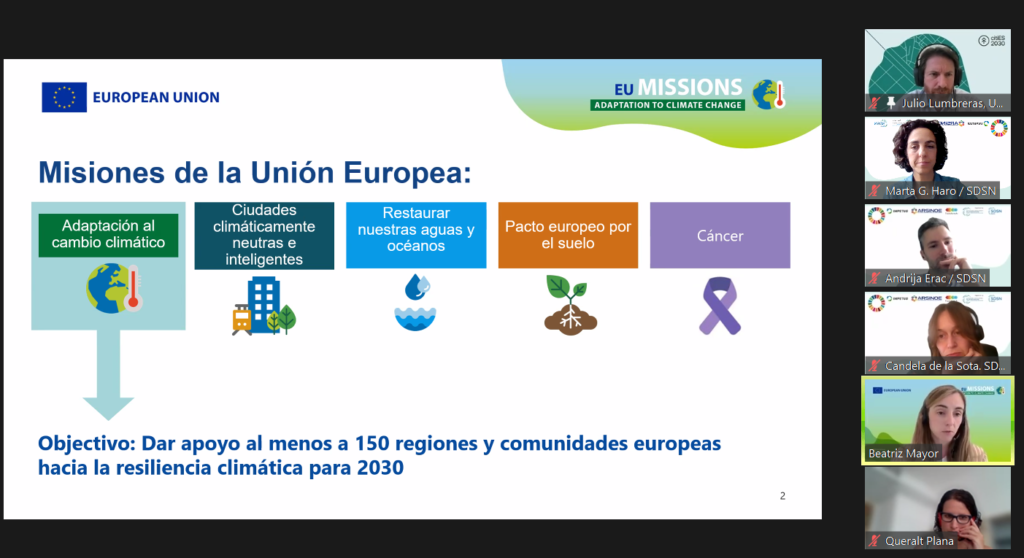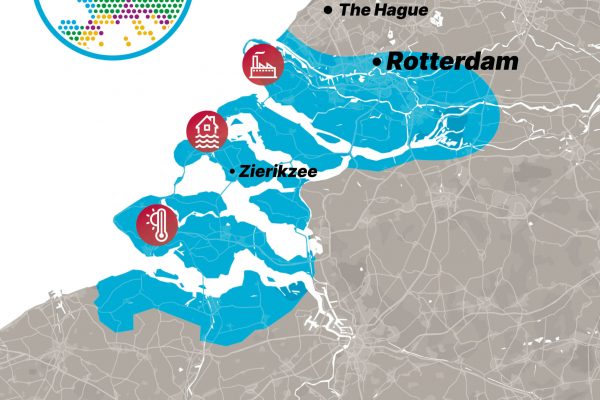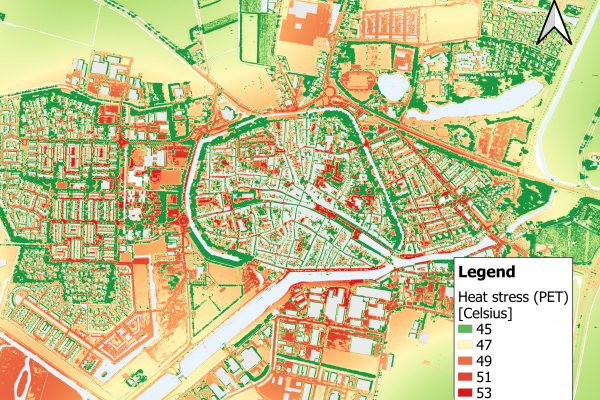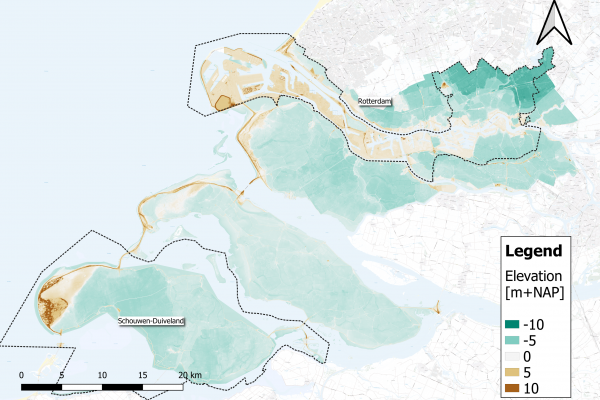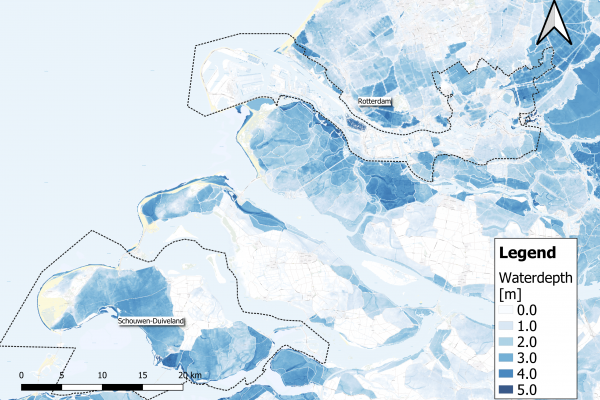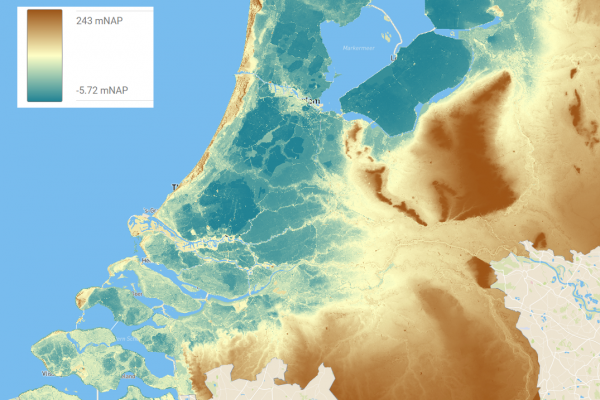How can Spain advance in climate change adaptation? The EU Mission: Adaptation to Climate Change aims to help European regions better understand the current and future climate risks, develop strategies to prepare for and adapt to the changing climate, and implement solutions to build resilience against these challenges. Within this framework, and in an effort to promote coordinated action and innovative solutions, the UN Sustainable Development Solutions Network (SDSN) and REDS-SDSN Spain organized a virtual workshop on July 2. This event, which brought together experts from various sectors, aimed to foster knowledge exchange among partners of major European climate change adaptation projects.
By creating this space for connection and dialogue, SDSN enabled several participants to share their contributions. Among them, Beatriz Mayor introduced the Mission Implementation Platform (MIP4Adapt), the platform for the EU adaptation mission implementation, which supports 150 communities in their climate adaptation and resilience actions. In Spain, 17 local initiatives are already being developed, demonstrating commitment at the community and local levels. Similarly, Julio Lumbreras, representing the citiES 2030 platform, highlighted the importance of integrating both climate change mitigation and adaptation, especially in urban contexts. He emphasized how multi-actor collaboration is essential to avoid “maladaptations,” or inadequate adaptation measures, and mentioned the renaturalization of school environments as a successful initiative requiring the participation of multiple actors (families, teachers, cities, etc.).
Several European projects that are currently being implemented in Spain through specific case studies were presented during the workshop. From Tenerife, ARSINOE, represented by Noelia Cruz Pérez (University of La Laguna), focused on studies in the Canary Islands, addressing groundwater availability and the impact of rising sea levels in the region. IMPETUS, a project presented by Queralt Plana Puig (Eurecat), has a demonstration site in Catalonia that focuses on critical climate issues in the region, including sea level rise, marine storms, water scarcity, and irregular precipitation.
From Galicia, Amaya Soto (CETMAR) explained the TransformAr project’s focus on the resilience of sectors such as mussel and clam farming. In this project, Oscar Bernardez (FEUGA) stressed the importance of recognizing the value of different perspectives. Amplifying every voice is crucial, as flexibility and coexistence between sectors are essential for fostering collaboration and mutual learning.
Finally, the REGILIENCE project is centered on coordination and support for adaptation projects, including sustainable urbanism in regions such as Murcia and Valencia, explained by Guido Schmidt (Fresh Thoughts Consulting).
The representatives of these projects work on case studies and demonstration sites in Spain, showing the local and specific focus of each initiative without limiting their utilization only to those regions. These projects are part of a broader effort to address climate adaptation in different European contexts.
The workshop concluded with a call to continue strengthening collaboration among actors to face the challenges of climate change. Multi-actor collaboration is not only possible but essential for achieving significant impacts. We thank the participants for their contributions and urge them to continue communicating and sharing future projects.
For more information about the projects and upcoming initiatives, visit the following websites: ARSINOE, IMPETUS, TransformAr, and REGILIENCE, MIP4Adapt, citiES 2030
Original source: https://sdsn.eu/
